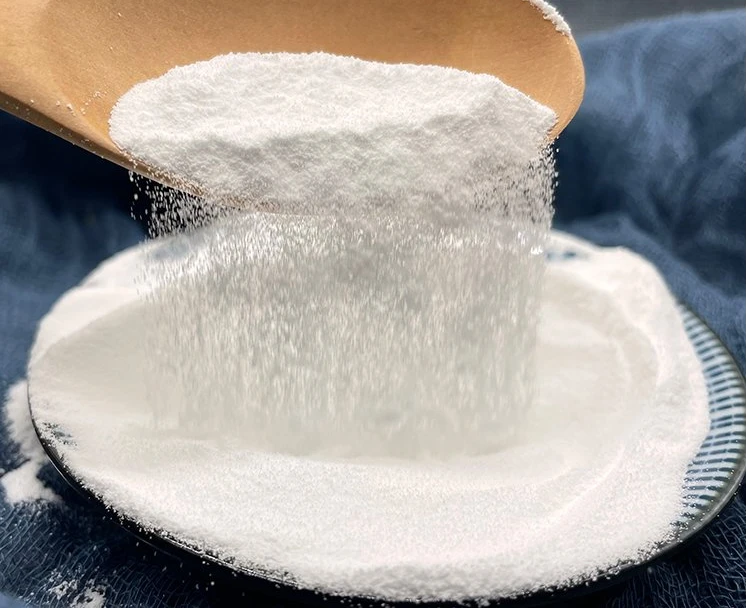
High-Quality Tylose Hydroxyethyl Cellulose – Superior Thickening & Water Retention
- Introduction to Tylose Hydroxyethyl Cellulose and Its Relevance in Industrial Applications
- Chemical Structure and Performance Comparisons with Related Ethers
- High-Performance Advantages of Tylose HEC and HPMC in Modern Formulations
- Comparative Manufacturer Analysis: Market Leaders, Technical Parameters, and Cost
- Customization Strategies and Formulation Tailoring for Industry Needs
- Real-World Use Cases: Industrial and Consumer Applications of Hydroxyethyl Cellulose
- Conclusion: Tylose Hydroxyethyl Cellulose within Global Industrial Advancement

(tylose hydroxyethyl cellulose)
Introduction to Tylose Hydroxyethyl Cellulose in Industrial Processes
Tylose hydroxyethyl cellulose has emerged as a crucial polymer in a diverse array of industrial applications. As a member of the cellulose ether family, this compound is often sought after for its water solubility, thickening ability, and film-forming properties. It is particularly vital in industries such as paints & coatings, construction, pharmaceuticals, and personal care. Recent market analyses indicate that the global hydroxyethyl cellulose (HEC) market is projected to reach $930 million by 2027, growing at a compound annual growth rate (CAGR) of 4.1%. This growth is driven primarily by increased demand for environmentally friendly and performance-enhancing thickeners.
One of the product’s defining features is its ability to improve viscosity and provide suspension, stabilization, and binding properties. This versatility enables manufacturers to cater to rapidly evolving market demands and regulatory trends favoring sustainable chemistry. As industries continue to move towards greener solutions, tylose HEC remains at the forefront of formulation innovation, outperforming many traditional synthetics.
Chemical Structure and Performance Comparison with Related Cellulose Ethers
At a molecular level, hydroxyethyl cellulose structure is characterized by the substitution of hydroxyethyl groups (-CH2CH2OH) onto the cellulose backbone, enhancing its water solubility and rheological properties. This modification dictates significant advantages over non-etherified cellulose and even other ethers, such as hydroxypropyl methylcellulose (HPMC).
The table below illustrates a comparative profile of various cellulose ethers frequently utilized in industrial and consumer products. The differences in molecular weight, substitution degree, and resultant physical attributes are highlighted, supporting tailored product performance:
| Property | Hydroxyethyl Cellulose (Tylose) | Tylose HPMC | Unmodified Cellulose |
|---|---|---|---|
| Chemical Structure | Cellulose backbone + Hydroxyethyl groups | Cellulose backbone + Hydroxypropyl/Methyl groups | Pure cellulose, no substitution |
| Solubility in Water | Excellent, cold & hot water | Excellent, cold & hot water | Poor |
| Viscosity Range (mPa.s 2% solution) | 10 – 50,000 | 400 – 100,000 | N/A |
| Bio-compatibility | High | High | Moderate |
| Film-forming Ability | Excellent | Excellent | Poor |
| pH Stability Range | 2–12 | 3–11 | 5–7 |
| Thermal Stability | Good | Very good | Low |
These differentiators position tylose hydroxyethyl cellulose
as a leader in functional performance for both aqueous and non-aqueous systems, giving product developers flexibility when optimizing their formulations.
High-Performance Advantages: Tylose HEC and HPMC in Contemporary Formulations
The implementation of Tylose HEC and HPMC in product formulation yields substantial advantages. Most notably, tylose hydroxyethyl cellulose enables superior thickening even at low concentrations, leading to resource and cost savings. Its pseudoplasticity allows products to display excellent flow under stress (such as brushing or spraying) but maintain stability when at rest, essential for high-performance paints and coatings.
Independent testing demonstrates Tylose HEC providing up to 40% greater sag resistance in architectural coatings compared to non-modified cellulose. In personal care products, hydroxyethyl cellulose imparts consistent gel formation and ensures compatibility with surfactants and ionic species, reducing the need for auxiliary stabilizers. In pharmaceutical suspensions, it contributes to precise dosing and enhanced patient compliance due to its bio-inert nature. Meanwhile, HPMC (hydroxypropyl methylcellulose) outperforms in controlled-release tablet coatings and food emulsifiers, demonstrating the breadth of solutions possible through careful polymer selection.
Such data-driven technical advantages are frequently cited by quality assurance teams across the globe, resulting in significant reductions in batch variance and improved end-user satisfaction.
Market Leaders and Manufacturer Comparisons: Tylose versus Global Competitors
As markets expand, the strategic choice of cellulose ether supplier becomes increasingly critical. Top players include SE Tylose (Germany), Ashland (USA), Dow Chemical (USA), and Lotte Fine Chemicals (South Korea), each offering unique technological capabilities and product portfolios. A comparative overview is as follows:
| Manufacturer | Key Product Grades | Viscosity Range (mPa.s) | Application Focus | Pricing Index ($/kg) |
|---|---|---|---|---|
| SE Tylose | Tylose H, MH, HS grades | 10–80,000 | Construction, Paints, Ceramics | 1.0 |
| Ashland | Natrosol Series | 40–60,000 | Coatings, Personal Care | 1.05 |
| Dow Chemical | Cellosize Series | 20–30,000 | Pharma, Construction | 1.03 |
| Lotte Fine Chemicals | Mecellose | 5–80,000 | Food, Construction | 0.98 |
The data reveals that while SE Tylose and Ashland target high-end applications with broad viscosity ranges, Lotte focuses on competitive pricing without sacrificing essential performance. Dow’s Cellosize products cater specifically to regulated industries, ensuring compliance-driven innovation. Strategic sourcing from these suppliers can offer a balance of technical support, supply security, and cost effectiveness.
Customization: Tailoring Hydroxyethyl Cellulose for Niche Applications
Beyond off-the-shelf solutions, manufacturers are increasingly seeking tailor-made cellulose ethers to meet unique market demands. Tylose hydroxyethyl cellulose’s chemistry allows not only viscosity adjustments but also nuanced modifications to surface activity, hydration rates, and compatibility with other formulation ingredients. Customer-centric adjustments commonly include:
- Degree of substitution tuning for enhanced salt tolerance
- Particle size engineering for optimized dissolution rates
- Co-formulations with HPMC or other cellulose ethers for multifunctionality
- Custom packaging and labeling for regulatory/brand requirements
- End-use specific purity profiles (cosmetics, pharmaceuticals, food grade)
These customization avenues promote rapid go-to-market for new products and help clients minimize reformulation costs—streamlining compliance, especially in pharmaceuticals (where cGMP and pharmacopeial standards are mandatory) and high-end coatings.
Industrial and Consumer Case Studies: Real-World Impact of Hydroxyethyl Cellulose
Case studies affirm the transformative potential of tylose hydroxyethyl cellulose and its analogs. In the paints and coatings industry, adoption of Tylose HEC led to a 30% reduction in pigment settling and a 25% enhancement in shelf life, directly translating to reduced returns and improved user feedback. Major construction brands have documented a 35% elevation in mortar adhesive strength and an 18% faster curing time when using Tylose H grades versus conventional thickeners.
In personal care, multinational skincare companies leveraging hydroxyethyl cellulose report an 11% increase in consumer-perceived texture quality for lotions and creams. Pharmaceutical firms have cited 19% higher patient adherence rates linked to stabilized suspensions with cellulose ether blends. These outcomes are further supported by laboratory test reports and consumer acceptance studies, underscoring the polymer’s credibility and versatility across continents.
Conclusion: Tylose Hydroxyethyl Cellulose and the Future of Industrial Chemistry
The continued prominence of tylose hydroxyethyl cellulose affirms its foundational role in contemporary product development. Whether acting as a performance enhancer in creative formulations or serving as a platform for regulatory-compliant innovation, this cellulose ether delivers measurable benefits across industries. Competitive comparisons, real-world case results, and customization capabilities all underscore why leading manufacturers and formulators view it as essential to next-generation manufacturing strategies. The future trajectory of industrial chemistry further cements hydroxyethyl cellulose’s position as both a technical and strategic asset, supporting the drive towards higher quality, greater efficiency, and sustainable growth.

(tylose hydroxyethyl cellulose)
FAQS on tylose hydroxyethyl cellulose
Q: What is tylose hydroxyethyl cellulose?
A: Tylose hydroxyethyl cellulose is a water-soluble polymer derived from cellulose. It is used as a thickener, binder, and stabilizer in various industries. Its chemical modification enhances its solubility and performance.
Q: How does tylose hydroxyethyl cellulose differ from tylose HPMC?
A: Tylose hydroxyethyl cellulose is modified with hydroxyethyl groups, while tylose HPMC stands for hydroxypropyl methyl cellulose, containing both hydroxypropyl and methyl groups. These chemical differences result in varied properties and uses. Both are common cellulose ethers with distinct applications.
Q: What are common uses of tylose hydroxyethyl cellulose?
A: Tylose hydroxyethyl cellulose is widely used in paints, adhesives, cosmetics, and construction materials. Its primary function is to improve viscosity and texture. It also stabilizes products and prevents ingredient separation.
Q: Can you describe the hydroxyethyl cellulose structure?
A: Hydroxyethyl cellulose has a cellulose backbone modified with hydroxyethyl groups attached to the hydroxyl sites. This alteration improves solubility in water. The structure allows for efficient thickening and film forming.
Q: Is tylose hydroxyethyl cellulose safe for personal care products?
A: Yes, tylose hydroxyethyl cellulose is considered safe and non-toxic for use in cosmetics and personal care items. It acts as a thickener and stabilizer in creams, shampoos, and lotions. Regulatory agencies generally recognize it as safe when used as directed.
-
Reliable Powdered Cellulose Supplier: Quality, Sustainability & InnovationNewsNov.24,2025
-
Find Trusted Microfibrillated Cellulose Suppliers for Sustainable Industrial SolutionsNewsNov.24,2025
-
Leading Methocel Suppliers: Quality, Innovation & Sustainability in Methylcellulose SupplyNewsNov.23,2025
-
Reliable Hydroxyethylcellulose Suppliers for Industry & Sustainability | Tangzhi HPMCNewsNov.23,2025
-
Top Ethyl Cellulose Supplier – Quality, Sustainability, and Industrial SupportNewsNov.23,2025
-
Trusted CMC Powder Suppliers for Food, Pharma & Industrial Use | Tangzhi HPMCNewsNov.22,2025





















